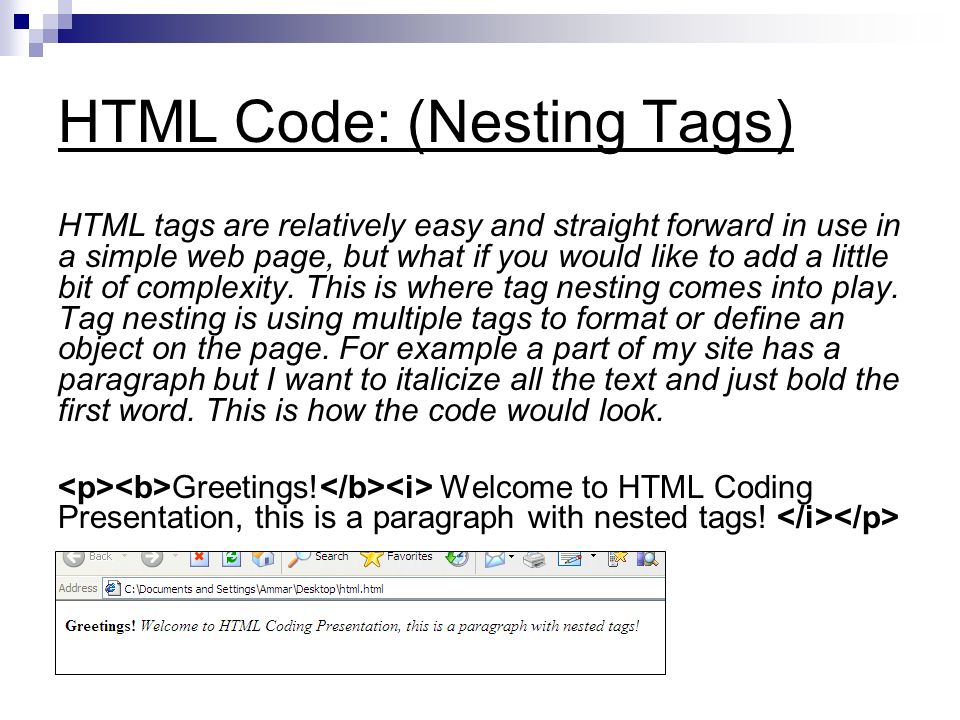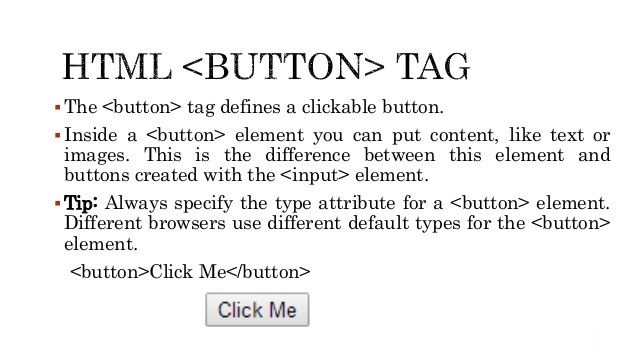There is a list of newly included tags in HTML 5. These HTML 5 tags (elements) provide a better document structure. This list shows all HTML 5 tags in alphabetical order with description.
List of HTML 5 Tags
| Tag | Description |
|---|---|
| <article> | This element is used to define an independent piece of content in a document, that may be a blog, a magazine or a newspaper article. |
| <aside> | It specifies that article is slightly related to the rest of the whole page. |
| <audio> | It is used to play audio file in HTML. |
| <bdi> | The bdi stands for bi-directional isolation. It isolates a part of text that is formatted in other direction from the outside text document. |
| <canvas> | It is used to draw canvas. |
| <data> | It provides machine readable version of its data. |
| <datalist> | It provides auto complete feature for textfield. |
| <details> | It specifies the additional information or controls required by user. |
| <dialog> | It defines a window or a dialog box. |
| <figcaption> | It is used to define a caption for a <figure> element. |
| <figure> | It defines a self-contained content like photos, diagrams etc. |
| <footer> | It defines a footer for a section. |
| <header> | It defines a header for a section. |
| <main> | It defines the main content of a document. |
| <mark> | It specifies the marked or highlighted content. |
| <menuitem> | It defines a command that the user can invoke from a popup menu. |
| <meter> | It is used to measure the scalar value within a given range. |
| <nav> | It is used to define the navigation link in the document. |
| <progress> | It specifies the progress of the task. |
| <rp> | It defines what to show in browser that don’t support ruby annotation. |
| <rt> | It defines an explanation/pronunciation of characters. |
| <ruby> | It defines ruby annotation along with <rp> and <rt>. |
| <section> | It defines a section in the document. |
| <summary> | It specifies a visible heading for <detailed> element. |
| <svg> | It is used to display shapes. |
| <time> | It is used to define a date/time. |
| <video> | It is used to play video file in HTML. |
| <wbr> | It defines a possible line break. |







Leave A Comment